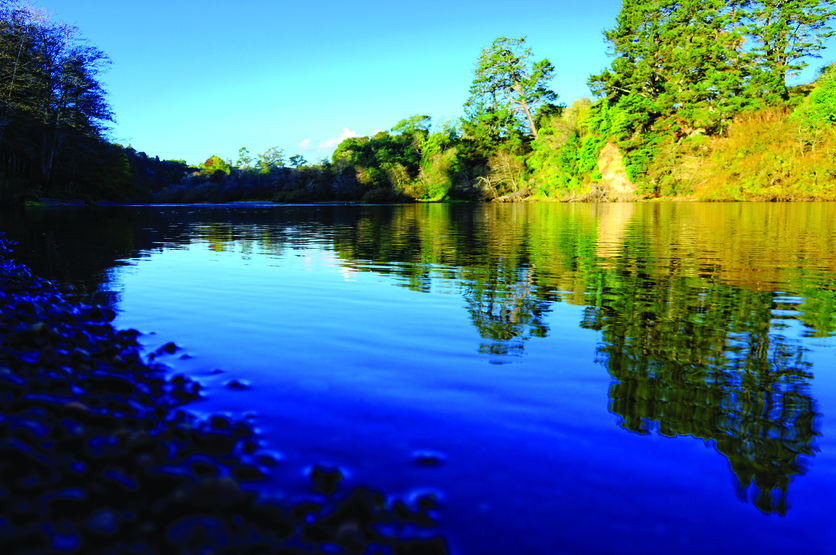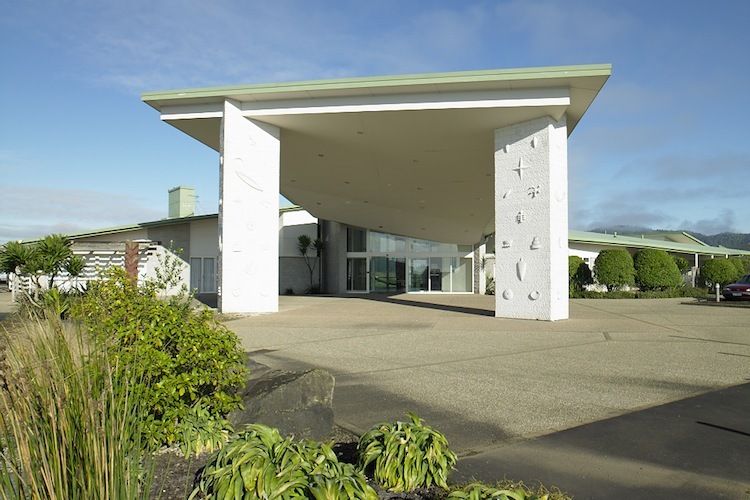Tōku awa koiora me ōna pikonga he kura tangihia o te mātāmuri - the river of life, each curve more beautiful than the last.
King Tāwhiao, second Māori King
Our collection of resources 'Tōku awa koiora' explores the restoration of the Waikato River, which has grown out of the Waikato River Deed of Settlement.
Sir Robert Te Kotahi Mahuta (Waikato-Tainui) lodged the Waikato River Claim with the Waitangi Tribunal in 1987. Sir Robert was concerned that river ownership and mana were denied to Waikato-Tainui, Waikato waters were polluted, fisheries were not protected and were depleted and Crown planning for the river did not take Waikato-Tainui concerns into account.
After 4 years of negotiations with the Crown, the historic Waikato River Deed of Settlement was signed on the banks of the Waikato River at Tūrangawaewae Marae on 22 August 2008. A revised deed of settlement was signed in December 2009.
The settlement recognises and acknowledges Waikato-Tainui concerns. An arrangement of co-management enables Waikato-Tainui and the Crown to work together for the benefit of the Waikato River.
The settlement contains many features not seen in New Zealand before and is a model that other indigenous groups around the world are closely observing. Waikato-Tainui believe the best way to make the most of the Waikato-Tainui settlement is to restore and protect the health and wellbeing of the Waikato River for future generations.
Collaboration with Waikato-Tainui College for Research and Development
We explore the Waikato River in collaboration with Waikato-Tainui College for Research and Development. We investigate some of the science projects that have occurred and are occurring along the river and talk to some of the iwi who live there.
River ecology
We learn about river ecosystems and the ecology and biodiversity of the Waikato River. We learn about the importance of the interconnectedness of the river with its catchment, the plant and animal life and the people who live there.
Meet the kaitiaki
Meet researchers, scientists and iwi who are working to restore and protect the health and wellbeing of the Waikato River. Learn about the projects occurring along the river – mitigation at the Huntly Power Station, glass eels, koi carp entrapment, whitebaiting survey, wetland and river island restoration and a model to explore and record cultural indicators.
Explore the river map interactive and meet iwi who live along the river. Hear what the river means to them and listen to their stories about the river.
Explore the river, its taonga and its future
Sustainability and interconnectedness are themes that underpin the student activities in Tōku awa koiora. River connections help students visualise the interdependence of species within a river environment. This information is helpful to understand some of the obstacles eels and whitebait face when we modify river environments, as explored in Saving taonga. Discover how the Ake ake model uses Māori perspectives to view changes in a local environment. Then try it out with Mapping the future.
Planning and pedagogy
The teacher resource Aspects of sustainability provides a brief explanation of each of the four aspects or components of the NZC education for sustainability. It includes some of the concepts that relate to each aspect and gives examples of these concepts in the context of Tōku awa koiora.
The videos Role-play – building science knowledge and Role-play – playing the game and reflections relate how a teacher used role-play with her year 5 and 6 class to enhance learning about longfin eels.
Question bank
The Tōku Awa Koiora – question bank provides an initial list of questions restoring the Waikato River and places where their answers can be found. The questions support an inquiry approach.
Key terms
For explanations of key concepts, see Tōku awa koiora – key terms.
Timeline
Explore the timeline to look at the history of the Waikato River in New Zealand.
Related content
Smart Water – a context for learning curates resources that foster a greater understanding and appreciation of water from source to tap. Smart Water is a partnership between Hamilton City Council, Waipā District Council and Waitomo District Council.
The interactive Wai Māori explores some of the values and some of the connections between iwi, wai and awa. It is part of the Rivers and Us suite of resources that use the Waikato River as the context for learning about water quality.
Repo (wetlands) – a context for learning explores wetland connections and wetland restoration using a te ao Māori approach.
Lakes380 – a context for learning curates resources that explore lake health past and present and draw upon both scientific and mātauranga Māori knowledge systems.
Restoring Te Auaunga – Oakley Creek looks at the history of this Auckland awa and how its restoration benefits both ecosystems and communities.
Aotearoa has abundant freshwater resources. The Hub has an abundance of freshwater resources too. We’ve got them organised in this handy interactive, complete with a PLD article to get you started!
Useful links
Read the Waikato-Tainui River Deed of Settlement.
See the articles in the New Zealand Journal of Marine and Freshwater Research 2018 Special Issue: Mātauranga Māori shaping marine and freshwater futures.
Macron usage
In te reo Māori, either a macron or a double vowel is used to indicate pronunciation. Science Learning Hub style is to use a macron, whereas Waikato-Tainui use a double vowel.


